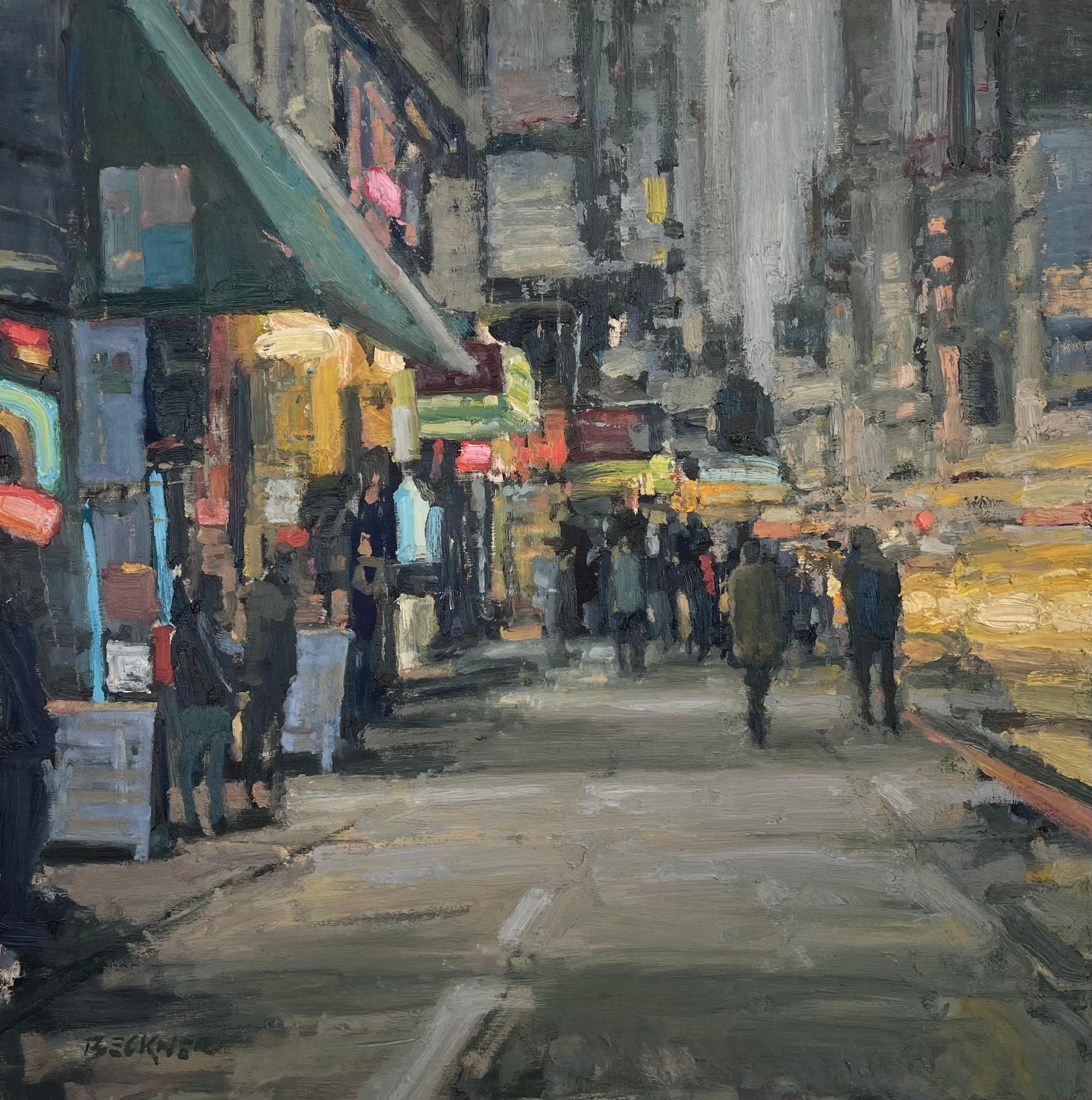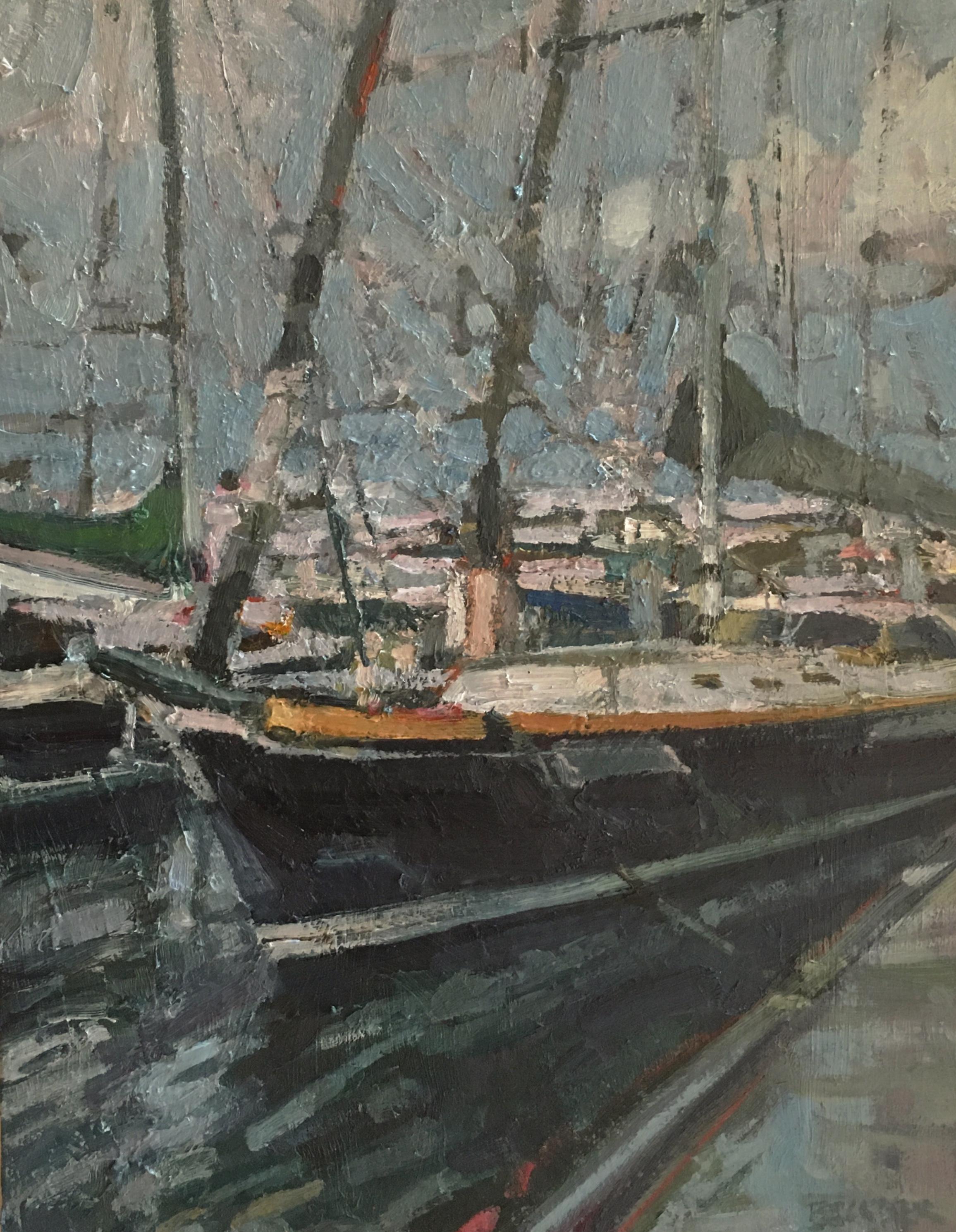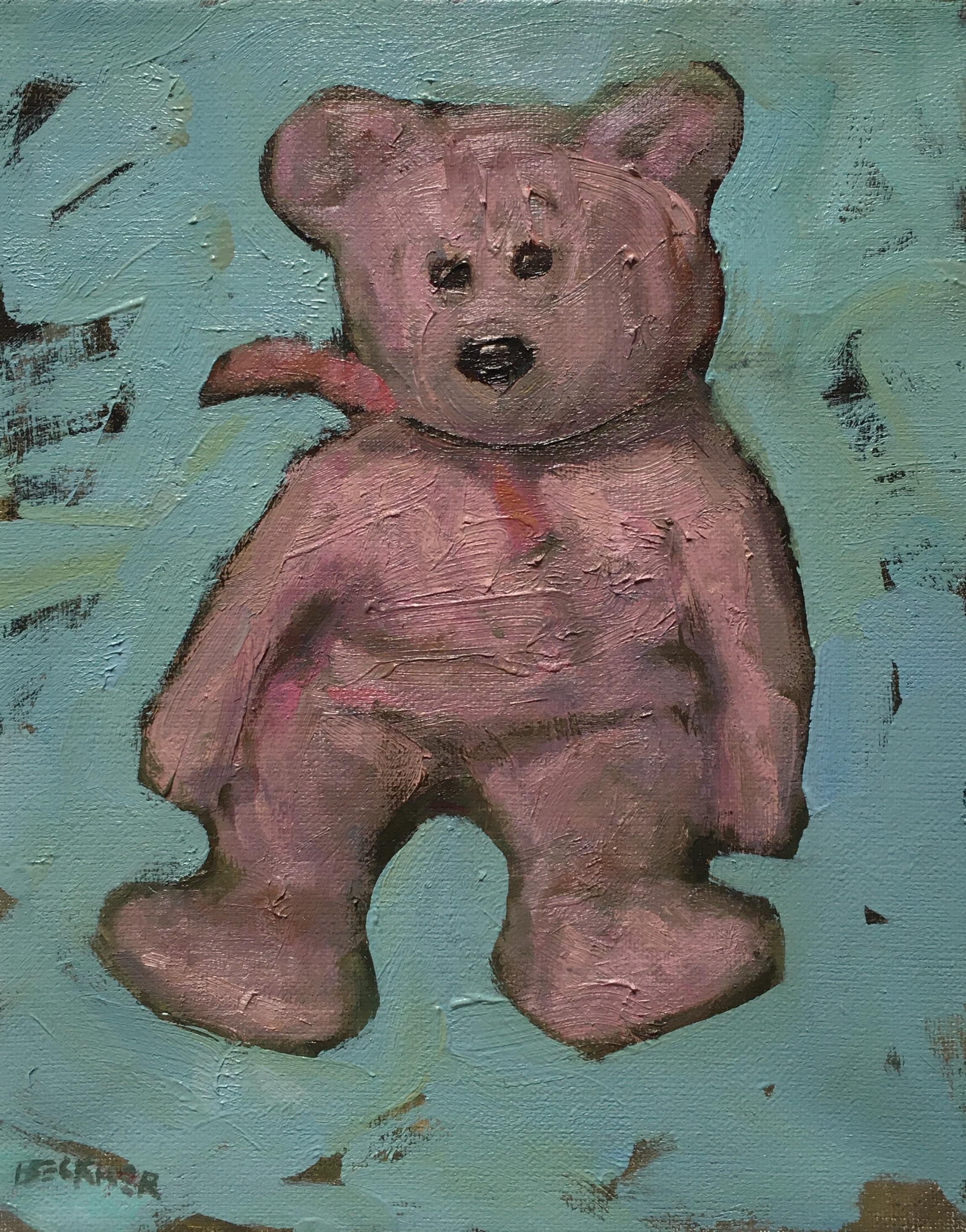Items Similar to "PALA MISSION" Northern San Diego County California Reservation.
Want more images or videos?
Request additional images or videos from the seller
1 of 8
Paul Grimm"PALA MISSION" Northern San Diego County California Reservation.1953
1953
About the Item
Paul Grimm
(1891-1974)
California Artist
Image Size: 24 x 30
Frame Size: 31 x 37
Medium: Oil on Canvas
Dated 1953
"Pala Mission"
The San Antonio de Pala Asistencia, or the "Pala Mission", was founded on June 13, 1816, as an asistencia or "sub-mission" to Mission San Luis Rey de Francia, some twenty miles inland upstream from the latter mission on the San Luis Rey River. Pala Mission was part of the Spanish missions, asistencias, and estancias system in Las Californias—Alta California. Today it is located in the Pala Indian Reservation located in northern San Diego County, with the official name of Mission San Antonio de Pala.[2][4] It is the only historic mission facility still serving a Mission Indian tribe.
Pala (a derivation of the native term Pale, meaning water) was essentially a small rancho surrounded by large fields and herds. The Pala site had been noted by Father Juan Mariner and Captain Juan Pablo Grijalva on an exploratory trip in 1795, when they went up the San Diego River, and then through Sycamore Canyon to the Santa Maria Valley (or Pamó Valley) and into what they named El Valle de San José, now known as Warner Springs. Once Mission San Luis Rey began to prosper, it attracted the attention of numerous mountain Native Americans in the area, who were called the Luiseño by the Spanish.
Spanish era
The Franciscan fathers chose this site for the Pala Mission because it was a traditional gathering place and village for the Native American residents. Father Peyrí oversaw the addition of a chapel and housing to the granary complex, which was constructed at the spot in 1810.[4] The chapel's interior wall surfaces featured paintings by native artists, originally measuring 144 by 27 feet. Workers went into the Palomar Mountains and cut down cedar trees to use as roof beams.[5]
Pala is unique among all of the Franciscan missions in that it boasts the only completely freestanding campanile, or "bell tower," in all of Alta California. By 1820, some 1,300 baptisms had been performed at the outpost.[6] Folk tales about the mission include mention of a prickly pear cactus, which became a local symbol of Christian victory, that grew up at the foot of the cross.[7]
Mexican era
After the nation achieved independence from Spain, the Mexican Congress passed An Act for the Secularization of the Missions of California on August 17, 1833 (the act was ratified in 1834).[8] Father Buenaventura Fortuna surrendered Mission San Luis Rey and all its holdings, including Las Flores Estancia and the Pala Asistencia, to government comisianados (commissioners) Pío Pico and Pablo de la Portillà on August 22, 1835; the assessed value of "Rancho de Pala" was $15,363.25.[9]
More than a decade later, fearful of the impending conquest of Alta California by the United States as a result of the Mexican–American War, Pico sold off all of the holdings (including Pala) to Antonio J. Cot and José A. Pico on May 18, 1846, for $2,000 in silver and $437.50 in wheat (the sale was later declared invalid by the U.S. Government).[6] Through the years, priests from San Luis Rey continued to visit Pala and conduct baptisms, marriages, and worship services.
Pala Asistencia, with its original bell tower, circa 1875. The structure is loosely styled after a similar one at the Mission of Nuestra Señora de Guadalupe located in Juárez, Mexico.[10]
Pala Mission around 1903, falling into ruins
Modern era
On Christmas Day 1899, the San Jacinto earthquake shook the Pala Valley, causing the roof over the church sanctuary to collapse.[11] In 1902, a group named the "Landmarks Club of Southern California", under the direction of American journalist, historian, and photographer Charles Fletcher Lummis, purchased Pala Mission. The following year, the Club returned ownership to the Catholic Church and "saved the Chapel and a few rooms from complete ruin with a timely work of partial restoration."[12]
Pala is the only California mission to have ministered without interruption to the Mission Indians for whom it was originally built.[11] It is also the only sub-mission (Asistencia) still intact. The traditional Corpus Christi Fiesta has been celebrated every year since its founding. Though it lacked a resident priest, Pala served as the "mother" mission to chapels in Cahuilla, La Jolla, Pauma, Pichanga, Rincon, Santa Rosa, and Temecula.[13]
On August 9, 1942 MGM motion picture actress Ruth Hussey was wed at Pala Mission. In 1948 the Verona Fathers (Sons of the Sacred Heart) succeeded the Franciscans in the care of the Mission.[14] Six years later, the fathers undertook a complete restoration of the Mission. In May 1991, administration of the Mission reverted to the Roman Catholic Diocese of San Diego; since June 1996 the Barnabite Fathers have held charge over the Mission's affairs.
Since 1996,[15] Pala has hosted the Vivian Banks charter school[16] (Kindergarten - 5th grade).
Mission bells
Pala's replica bell tower.
Bells were vitally important to daily life at any mission. The bells were rung at mealtimes, to call the Mission residents to work, religious services, birth and funeral ceremonies, and to signal the approach of a ship or returning Spaniard, and other occasions. Novices were instructed in the specific rituals for ringing the mission bells. Pala's bells are the same ones used since 1916. American academician, architect, and author Rexford Newcomb published design studies of the original bell tower in his 1916 work The Franciscan Mission Architecture of Alta California.[17] The structure was completely destroyed by torrential rains later that same year; a precise replica was erected immediately thereafter and still stands today. The structure measures some 35 feet above the base (which is 15 feet off the ground) and supports two bells, each hanging from a rawhide tether.
The large bell, set in the lower embrasure, bears inscriptions in Latin and Spanish as follows (translated into English):
Paul Grimm (1891-1974)
Paul A. Grimm was born of German parents in King Williams Town, South Africa on January 11, 1891. When brought to the United States at age seven, he already showed promise as an artist. At 18 he won a scholarship in Rochester, New York for art study at the Düsseldorf Royal Academy.
After many years at that prestigious school, he moved to Hollywood in 1919 and began his art career painting backdrops for the movie studios. Leaving the movie capital, Grimm settled in Palm Springs in 1932 and remained a resident there for the rest of his life.
He maintained a small studio-gallery in downtown Palm Springs at 428 N. Palm Canyon Road where such notables as President Dwight D. Eisenhower often visited and shared confidences. Eisenhower once wrote, "I profited from the experience of seeing how a real artist creates the effects he wants."
Although Grimm painted scenes of the High Sierra (where he often could be found in summers), missions, and Indian portraits, his fame lies as a painter of the southern California desert and its many moods. One reviewer once wrote, "His canvases of Mt San Jacinto, which for their sheer magnificence and power of conception and execution, rank as probably the finest work ever done on the subject."
Grimm died in Palm Springs on December 30, 1974. Exhibited: San Diego Exposition, 1935.
- Creator:Paul Grimm (1891 - 1974, German)
- Creation Year:1953
- Dimensions:Height: 24 in (60.96 cm)Width: 30 in (76.2 cm)Depth: 3 in (7.62 cm)
- More Editions & Sizes:Image Size: 24 x 30 Frame Size: 31 x 37Price: $15,000
- Medium:
- Movement & Style:
- Period:
- Framing:Frame IncludedFraming Options Available
- Condition:Please visit my storefront for more paintings and antique items.
- Gallery Location:San Antonio, TX
- Reference Number:1stDibs: LU769314433592
About the Seller
5.0
Vetted Seller
These experienced sellers undergo a comprehensive evaluation by our team of in-house experts.
Established in 1974
1stDibs seller since 2017
82 sales on 1stDibs
Typical response time: 2 hours
- ShippingRetrieving quote...Ships From: San Antonio, TX
- Return PolicyThis item cannot be returned.
More From This SellerView All
- "NAVAJO MEDICINE MAN" FRAMED 26.5 X 32.5 CALFORNIA ARTIST (1904-1983)Located in San Antonio, TXJohn William Hilton (1904 - 1983) California Artist Image Size: 18 x 24 Frame Size: 26.5 x 32.5 Medium: Oil on Panel "Navajo Medicine Man" Biography John William Hilton (1904 - 1983)...Category
20th Century Impressionist Landscape Paintings
MaterialsOil
- "MOVE ALONG" CATTLE IN WEST TEXAS. WESTERN COWBOY, COWS, HORSES, MOUNTAINSLocated in San Antonio, TXLester Hughes (1938-2021) El Paso Artist Image Size: 15 x 30 Frame Size: 21 x 36 Medium: Oil "Move Along" Herding Cattle West Texas Biography Lester Hughes (1938-2021) From El Paso, ...Category
1970s Impressionist Landscape Paintings
MaterialsOil
- "A Glowing Day South West Texas" Date: 1910. Exquisite Sky in this Texas pieceBy Julian OnderdonkLocated in San Antonio, TXJulian Onderdonk (1882 - 1922) San Antonio Artist Image Size: 6 x 9 Frame Size: 10.75 x 13.75 Medium: Oil Dated 1910 "A Glowing Sky" SW Texas Julian Onderdonk (1882 - 1922) Known as...Category
1910s Impressionist Landscape Paintings
MaterialsOil
- "COREOPSIS & DAGGERS" TEXAS HILL COUNTRY WILDFLOWERS 44 X 56 FRAMED WOW!By Robert HarrisonLocated in San Antonio, TXRobert Harrison (Born 1949) San Antonio Artist Image Size: 36 x 48 Frame Size: 44 x 56 Medium: Oil on canvas Dated 1999 "Coreopsis & Daggers" Texas Hill Country. Wildflowers Biograph...Category
1990s Impressionist Landscape Paintings
MaterialsOil
- "BLUEBONNET FENCE" TEXAS HILL COUNTRY FRAMED 15.25 X 18.25By Manuel GarzaLocated in San Antonio, TXManuel Garza (Born 1949) Texas Artist Image Size: 9 x 12 Frame Size: 15.25 x 18.25 Medium: Oil on Canvas "Bluebonnet Fence" Biography Manuel Garza (Born 1949) Growing up in Central T...Category
20th Century Impressionist Landscape Paintings
MaterialsOil
- "ROAD TO THE MOUNTAINS" FRAMED 42.25 X 52.25 CALIFORNIA WILDFLOWERS STUNNINGBy Gary RayLocated in San Antonio, TXGary Ray 1952 California Artist Image Size: 30 x 40 Frame Size: 42.75 x 52.75 Medium: Oil on Board "Road to the Mountains" Biography Gary Ray 1952 Gary Ray (B...Category
20th Century Impressionist Landscape Paintings
MaterialsOil
You May Also Like
- "Sidewalks in Greys, " Oil PaintingBy Jim BecknerLocated in Denver, COJim Beckner's (US based) "Sidewalks in Greys" is an oil painting that depicts a busy city sidewalk and street at night cast in the fluorescent light of the signs and cars and passers...Category
2010s Impressionist Figurative Paintings
MaterialsOil, Board
- "Dock" Oil PaintingBy Jim BecknerLocated in Denver, COJim Beckner's (US based) "Dock" is an oil painting that depicts a sailboat and other boats in the distance docked and crowded together. Artist statement: Jim Beckner’s art vibrate...Category
2010s American Impressionist Figurative Paintings
MaterialsOil
- "Roadway, " Oil PaintingBy Jim BecknerLocated in Denver, COJim Beckner's (US based) "Roadway" is an original, handmade oil painting that depicts a busy city street filled with the bright patterning of cars and passerby. About the Artist: ...Category
2010s Impressionist Figurative Paintings
MaterialsOil, Board
- "Green I" Oil PaintingBy Jim BecknerLocated in Denver, COJim Beckner's (US based) "Green I" is an oil painting that depicts a dense lush forest and shrubbery with just a slice of sky peeking from behind the branches. Artist statement: J...Category
2010s American Impressionist Figurative Paintings
MaterialsOil
- "Pink Bear" Oil PaintingBy Jim BecknerLocated in Denver, COJim Beckner's (US based) "Pink Bear" is an oil painting that depicts a small pink bear toy with a light blue background Artist statement: Jim Beckner’s art...Category
2010s American Impressionist Figurative Paintings
MaterialsOil
- The carouselLocated in PARIS, FRPierre Léonce FURT 1870-? The carousel Painting, oil on canvas Signed and dated 1904 Painting: 27 x 41 cm (10.6 x 16.1 inches) Beautiful original frame: 37 x 51 cm (14.6 x 20.1 inche...Category
Early 20th Century Impressionist Landscape Paintings
MaterialsOil




